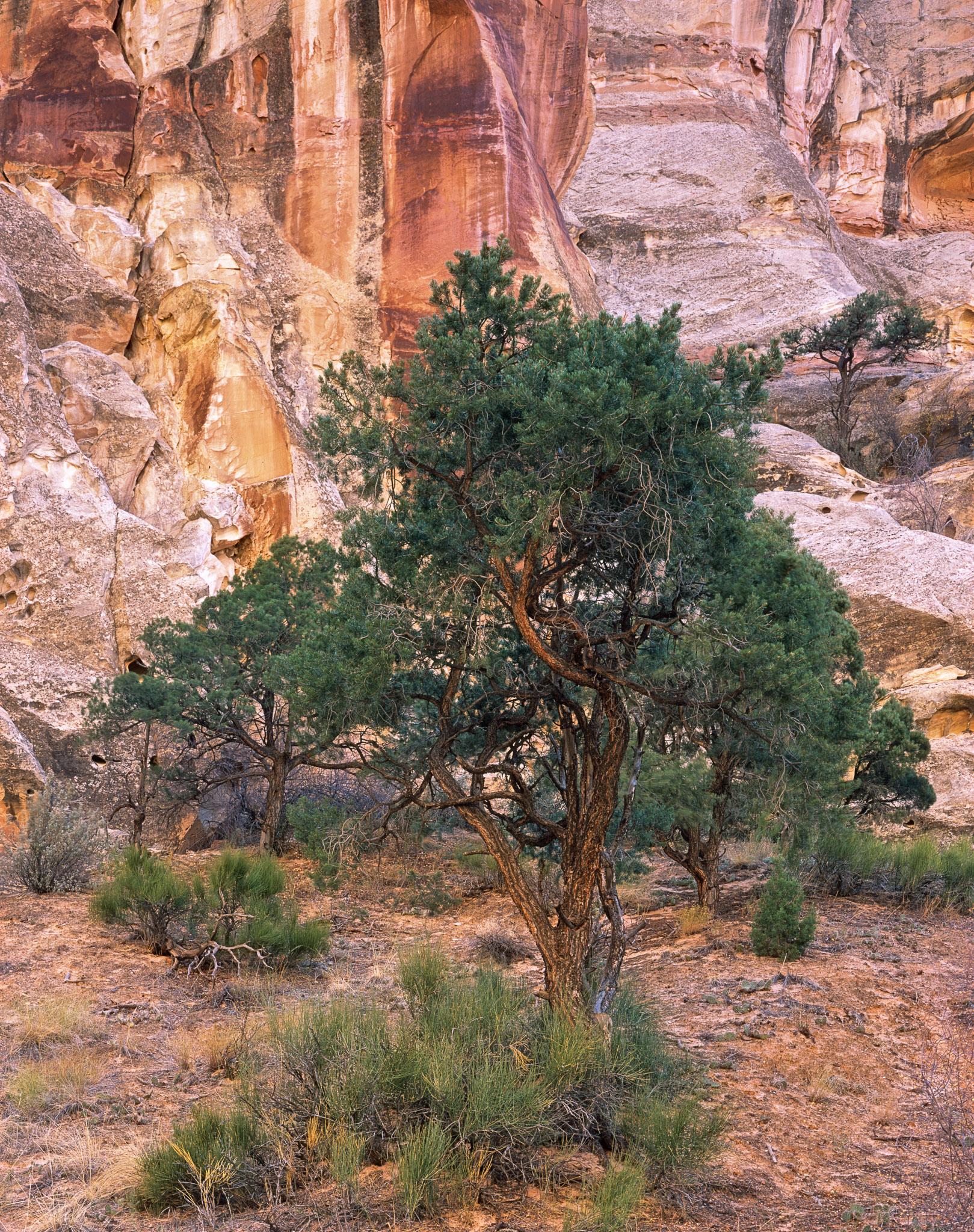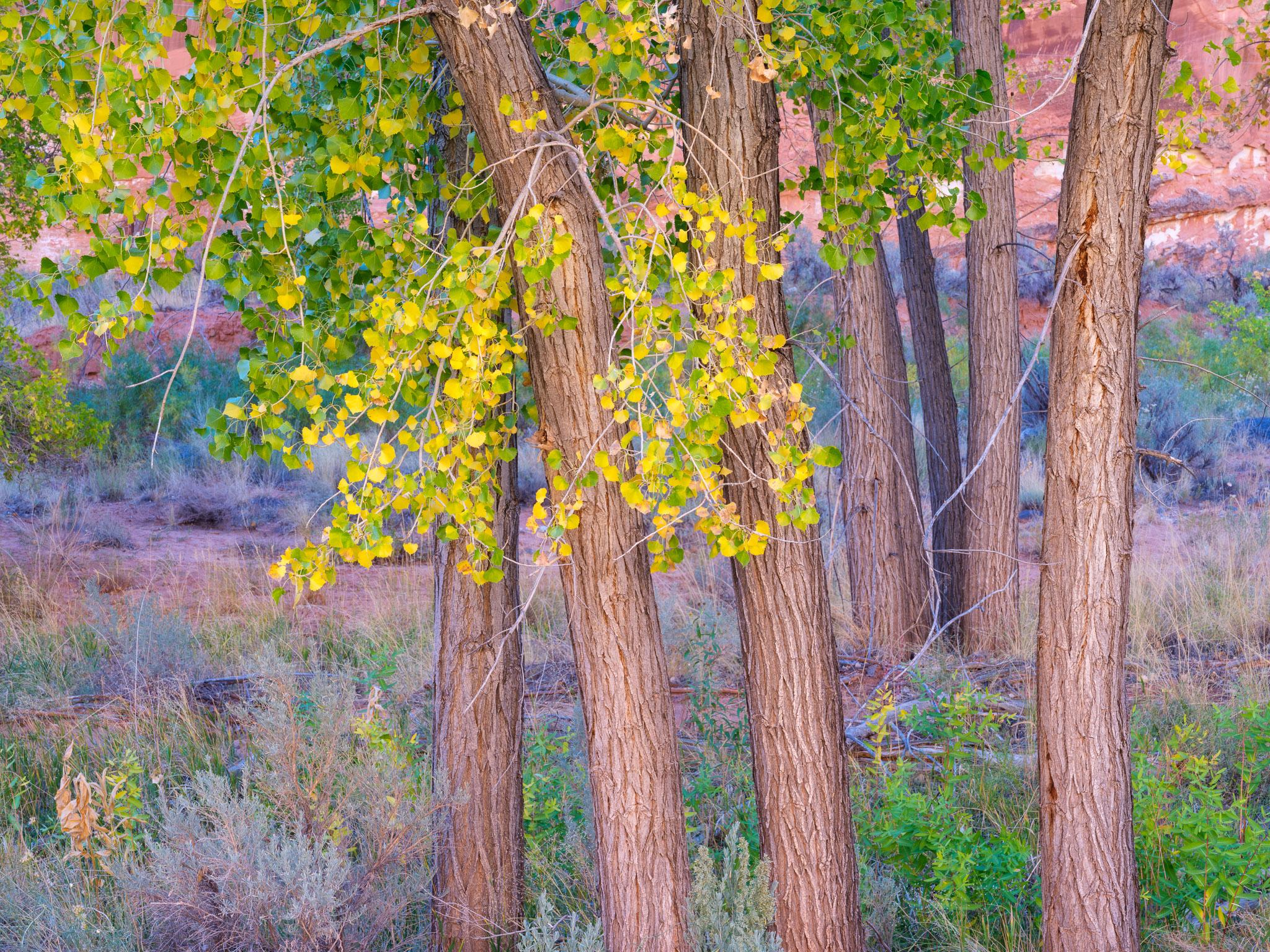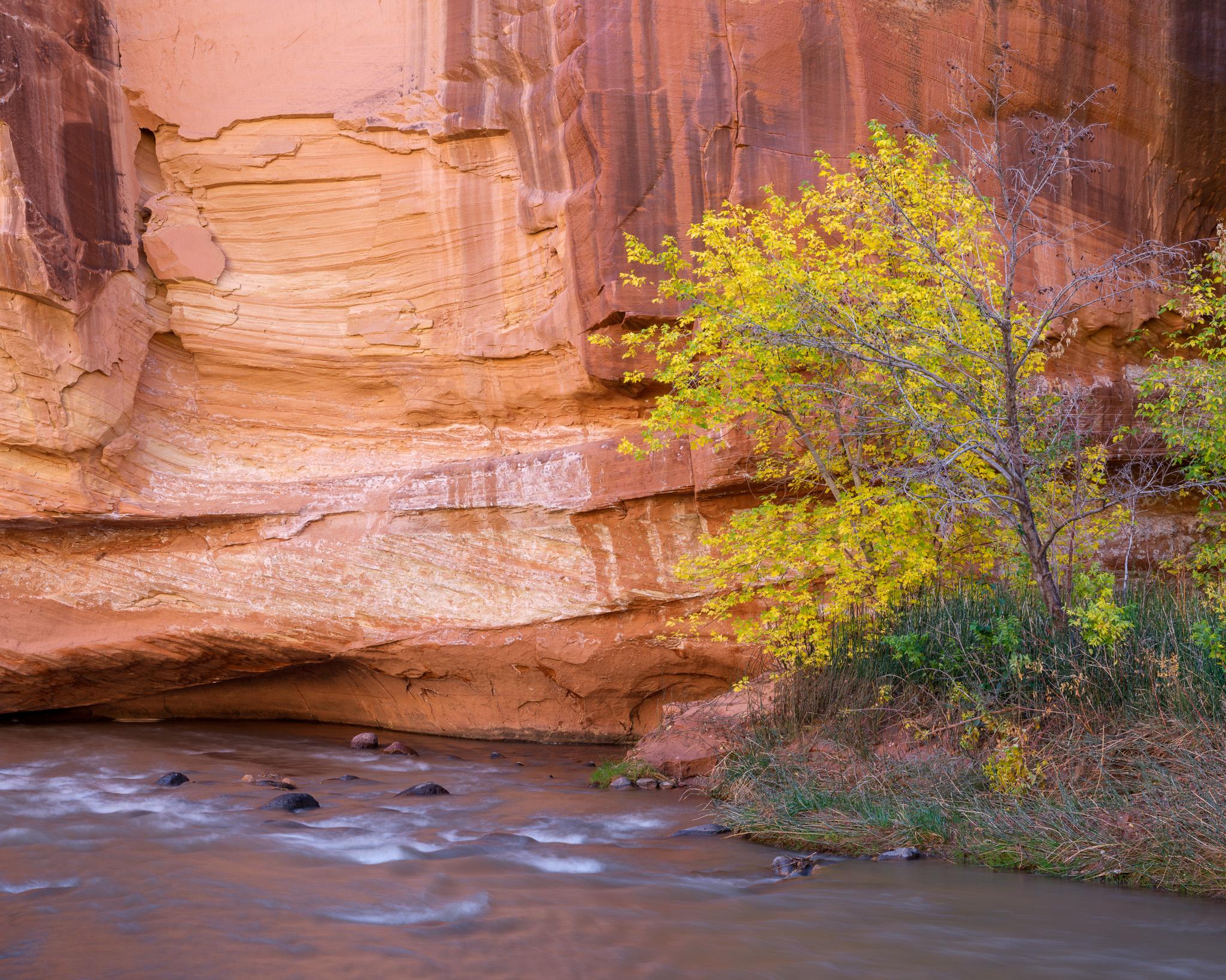Capitol Reef National Park Fine Art Prints
Colorful cliffs, hidden canyons, and the dramatic Waterpocket Fold in Utah's red rock country.
Museum-quality archival prints • Multiple sizes available • Limited editions
Showing 3 available prints from the Capitol Reef collection
Capitol Reef National Park Landscape Photography
The Waterpocket Fold
Capitol Reef National Park protects the Waterpocket Fold, a 100-mile long warp in the Earth's crust that exposes rock layers spanning 270 million years of geological history. This massive monocline creates dramatic cliffs and colorful rock formations that rise thousands of feet above the surrounding desert. The fold's north-south orientation creates exceptional opportunities for side-lighting during sunrise and sunset, enhancing the three-dimensional quality of the landscape.
The Waterpocket Fold gets its name from the natural water pockets (or "tanks") that form in the Navajo Sandstone, historically providing water for Native Americans, pioneers, and wildlife. These water pockets, combined with the fold's dramatic cliffs and hidden canyons, create unique photographic opportunities unavailable in Utah's more famous national parks.
Colorful Rock Layers & Formations
Capitol Reef showcases some of the most colorful rock formations in the Colorado Plateau, with layers ranging from deep red Moenkopi mudstone to white Navajo Sandstone to gray Mancos Shale. The Chinle Formation creates purple, green, and gray badlands that add unexpected colors to the typical red rock palette. These varied rock layers create natural color compositions that change dramatically with lighting conditions throughout the day.
The park's white Capitol Dome, resembling the U.S. Capitol building, stands as the park's signature landmark. This massive Navajo Sandstone formation rises above the historic Fruita orchards, creating compositions that blend dramatic geology with pioneer history. The contrast between white domes and red cliffs provides endless photographic opportunities for landscape photographers.
Hidden Canyons & Slot Canyons
Capitol Reef features numerous hidden canyons and slot canyons that require hiking to access but reward photographers with intimate red rock scenes. Capitol Gorge, Grand Wash, and Cohab Canyon provide relatively easy access to narrow canyon experiences, while more remote canyons like Headquarters Canyon and Spring Canyon offer wilderness solitude and pristine photographic subjects far from crowds.
The park's slot canyons, carved by flash floods through Navajo Sandstone, create cathedral-like spaces where filtered light produces glowing red walls and dramatic shadow patterns. These narrow passages require careful timing to photograph, as direct sunlight enters only during specific times of day depending on the canyon's orientation and the season.
Historic Fruita District
The historic Fruita District adds cultural interest to Capitol Reef's geological wonders. Mormon pioneers planted orchards in the late 1800s that still produce fruit today, creating unique opportunities to photograph fruit trees against red rock backdrops. Spring blossoms and fall color in the orchards provide seasonal subjects that contrast beautifully with the permanent desert landscape.
The Gifford Homestead and other pioneer structures provide human-scale subjects that help convey the massive scale of Capitol Reef's cliffs and formations. These cultural elements, combined with the park's natural beauty, create photographic opportunities that tell both geological and human stories within a single frame.
Fine Art Capitol Reef Prints
Capitol Reef National Park photographs are printed using archival techniques designed to capture the park's exceptional color range and tonal variations. Each print preserves the subtle gradations between rock layers and the dramatic lighting that makes Capitol Reef a premier location for large format landscape photography.
Limited edition prints available in sizes from 11x14 inch intimate canyon studies to large 40x50 inch pieces showcasing the dramatic scale of the Waterpocket Fold. All prints include certificates of authenticity and are produced on museum-quality materials suitable for serious collectors of Utah landscape photography.
Capitol Reef Photography Frequently Asked Questions
What are the best locations for Capitol Reef photography?
Capitol Reef's top photography locations include Sunset Point, Goosenecks Overlook, Capitol Gorge, Hickman Bridge Trail, and the Fruita orchards. The Scenic Drive provides access to dramatic viewpoints and hidden canyons. Panorama Point offers expansive views of the Waterpocket Fold perfect for sunrise and sunset photography.
When is the best time for Capitol Reef landscape photography?
Spring (April-May) and fall (September-October) offer ideal conditions with comfortable temperatures and excellent light. Spring brings orchard blossoms, while fall provides autumn colors. Summer monsoons create dramatic storm photography opportunities. Winter offers solitude and snow-dusted red rocks, though some roads may be impassable.
Are Capitol Reef prints suitable for contemporary interiors?
Yes, Capitol Reef landscape photography prints are excellent for contemporary design. The park's exceptionally colorful rock layers and dramatic formations create bold visual statements. The varied color palette from red to white to purple rocks offers versatility for matching different interior color schemes while maintaining natural authenticity.
What makes Capitol Reef landscape photography unique?
Capitol Reef offers photographic opportunities distinct from Utah's more famous parks. The Waterpocket Fold creates unique geological formations unavailable elsewhere, while the park's relative obscurity ensures fewer crowds than Zion or Arches. The exceptional color range, hidden canyons, and combination of natural and cultural subjects make Capitol Reef special for landscape photographers.



